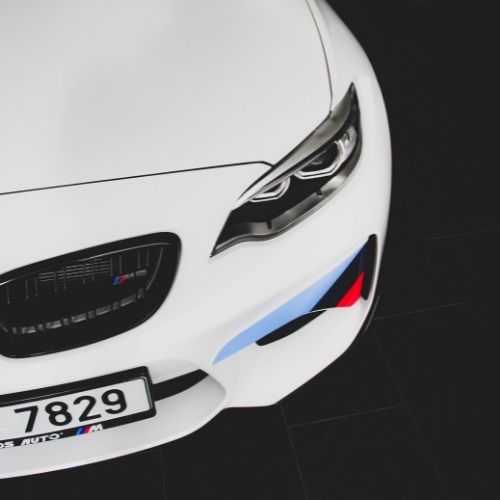We may get commissions for purchases made through links in this post. Thanks for the support! 👍
When you have driven a car or owned one, you might have noticed that today cars have no bumpers. A car bumper is more than what meets the eye. Modern cars are very expensive to set up as new even after a small collision. Some parts are due to the fitting of sensors, robot bits, and other small things crammed to the car extremities, while a substantial part is because of new automobile design, which has resulted in the elimination of the bumper.
Why do cars no longer have bumpers? The primary reason why cars have no longer bumpers is due to the federal law that needs rear and front bumper to withstand the results of a lower speed with no or little damage to the car. The law however differs in various nations. Individuals often like a clean look with no rear or front bumpers. Utilizing bumper covers instead of actual bumpers allows manufacturers to build stronger supports behind the cover that don’t also have to be aesthetically pleasing.
What exactly is a Car Bumper?
A car bumper is a metallic or a plastic shroud that protrudes and is often referred to as a bumper cover. It surrounds the material to absorb energy. These are created for impact absorption to the rear and front of the vehicles. It minimizes low-speed damage of collision.
Currently, the vehicle bumpers come with a rigid bar that reinforces the external cover. There are sections of plastic or compressible foam underneath. In the USA, passenger cars must have bumpers that absorb an impact of 5 mph due to another vehicle without any harm to the body of the car. The plastic or foam makes it possible. When an impact, this material pushes down between the body of the vehicle and the bar reinforcing it.
Why don’t cars have bumpers anymore?

Three primary reasons for the elimination of car bumpers are:
1. The primary objective
Bumpers for older cars were designed to push and also guard but also avoid body damage. Today’s bumpers are designed for energy absorption rather than pushing. These are designed to absorb energy to safeguard the occupants, to not avoid body damage.
2. Weight
Older automobiles featured steel bumpers; current bumpers have aluminum channels with styrofoam coverings as well as a flexible fascia covering them, all of which weigh much less as compared to the old steel bumper.
3. Resistance of Wind
Because everyone is obsessed with wind resistance plus fuel economy, bumpers are incorporated into the body and also the airflow. External bumpers are unable to accomplish this.
The downside is that not having a bumper, however, can become quite expensive for repair when it undergoes any damage.
- Lift Kits vs Leveling Kits: What is the difference, and which do you need?
- Here’s How To Make Truck Wheels Stick Out
- Pickup Trucks without a bed: How to stay legal?
What are modern cars made of now?

Most of the modern cars are made with bumper covers because of the following reasons:
1. Collision protection
Collision Protection is a term that refers to the ability to protect yourself from being in a collision. They started adding it into vehicles since they needed to protect the automobiles. But this may be the primary reason they continue to do so today. A collision can shatter your car into a million pieces, rendering your car useless otherwise. Manufacturers continue to use these bumper coverings on vehicles for that specific safety.
2. Energy that is absorbed by the material
Another key reason that new vehicles still have bumpers is that the material protects you from potential harm in the event of a collision. Bumpers are typically constructed of plastic or another solid material such as steel or aluminum. Whenever something bad happens to the car, this offers support or backing. Certain materials, such as polypropylene, tend to absorb energy upon impact.
3. Style with Safety
This contributes to the vehicle’s elegance and design. People wouldn’t mind buying bumper covers because modern cars come up with so many exceptional styles. Cars with bumpers, in short, are a sign of both styles as well as safety. Of course, if you really want a metal one, you can always upgrade to an off-road version if you have a pickup truck!
Frequently Asked Questions
Do all cars have plastic bumpers?
From what I could find, no cars that are being built today come equipped with the old school bumpers, instead of a bumper cover.
When did cars stop having metal bumpers?
We stopped seeing new cars being built with metal bumpers back in the 1990s, and all cars past then have really been build with the plastic covers instead. While its an end of an era, it did increase safety a lot, especially now that cars are able to go much faster than before.
What is the plastic under a car bumper called?
This plastic piece is called the air dam, it essentially directs airflow in a way to give better aerodynamics. Mainly, it keeps air flow from going underneath of the vehicle, instead it goes to the sides. The less airflow underneath of the vehicle, means it sticks to the road better.
Conclusion
Bumper design is in several aspects subject to regional regulations for modern car generation. From the year 1973, bumpers had to meet several features in design, that have resulted in our current condition. Bumpers need to hold the impact of a minimum speed with no damage to the car structure.
This is unlike the decorative rubber or chrome elements essentially which were the design of the 1960s. There are also regulations on height as well. This is to have the car at a lesser or more level as compared to that of the backing of a car into it. The bumper design also has a connection to pedestrian safety.
![This Is How Cars Have Wifi [And Why]](https://amanandhisgear.com/wp-content/uploads/2020/01/How-do-cars-have-wifi.jpg)

